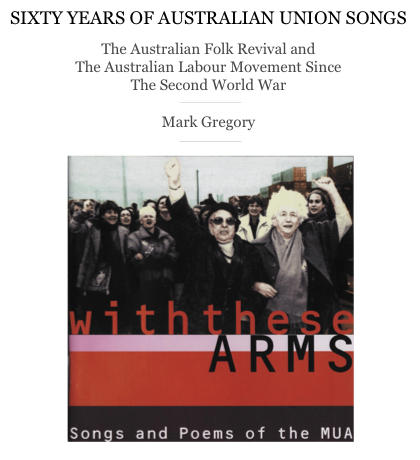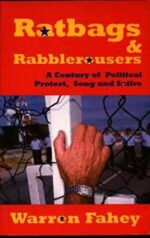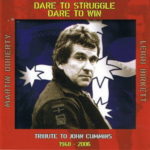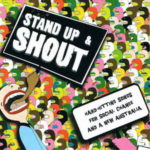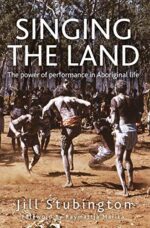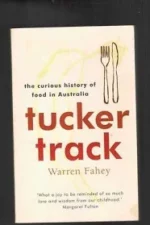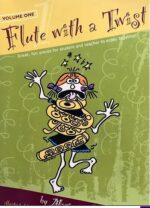Description
Comb bound book and CD
Based on many years of research (including research for the songs and poems that have been selected for this website since 1997), this 89 page book includes the following chapters:
| Introduction |
| Chapter One: The Australian Folk Revival and the Union Movement |
| Chapter Two: Folk Song and Unions – Political Songs |
| Chapter Three: Art and Working Life Program |
| Chapter Four: MUA Centenary CD and the Union Songs website |
| Chapter Five: Rights at Work: Contemporary Song and Poetry |
| Chapter Six: Conclusion |
| Bibliography |
| Discography
Intriguing New Study of Australian Union SongsPosted by newunionism under books
Unions are often the largest longest lasting membership-based organisations in many countries. They play a key role in shaping policy, apart from working conditions and pay. They campaign for equity in a community and insist on democratic government, decent health and education, equal pay for men and women workers, decent housing and public transport. They are anti-racist and opposed to war, and they have an international outlook. The history of union involvement is a history of a battle for human rights. All these concerns play a part in labour movement culture, and this is certainly reflected in union songs.
Some of the Australia’s oldest unions have ancient links to the oldest unions in Britain. Australian unions can lay claim to some very early labour movement success – like stonemasons building a church in Sydney and a university in Melbourne winning the eight hour day in the 1850s. Like unions everywhere, their development and fighting spirit was accompanied, urged on and celebrated in song and poetry. A 1953 collection of Australian poetry attempted to highlight this kind of lyrical material. Edited by Australian poet Marjory Pizer, the collection used the name of the Henry Lawson poem ‘Freedom on the Wallaby‘ as its title. This earlier collection offered the reader a sweeping sample of dissenting voices, from early nineteenth century convicts (some of whom were early trade unionists) to the new poets of the mid-twentieth century. Among the most avid readers of this collection were members of the post war folk song revival, some of whom set themselves the task of setting the poetry to music. At the same time the field collectors of the remnants of Australia Bush Songs were alerting the nation to an important part of its musical heritage. Gregory’s own study, published this year, covers the years since the end of World War Two. In doing so, it relies heavily on this earlier, pioneering work. To gain a picture of union songs Gregory has scoured union magazines, folk song collections and folk magazines, searching for songs and information about the events they describe. He has also interviewed important writers of such material, many of whom could be described as union and political activists. It is a great read, and it helps make one thing very clear: some of the best description and evidence of union activity and motivation resides in the songs and poems associated with the movement. Historians are often loath to illustrate their studies with
|
